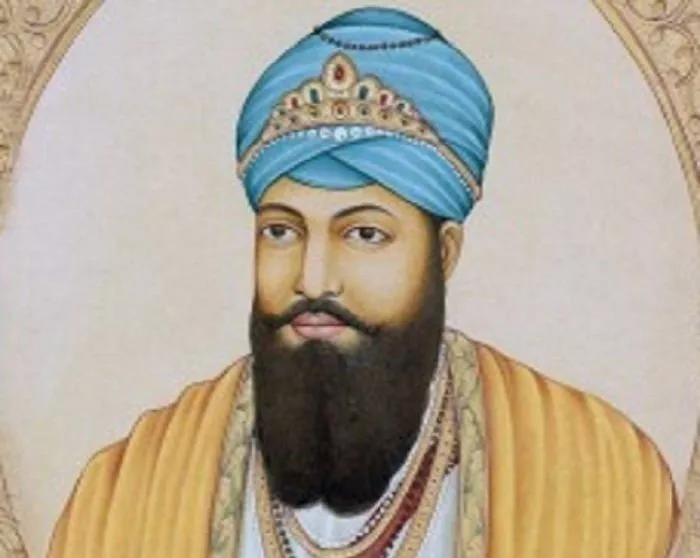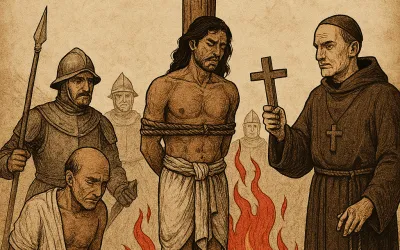Early life
Guru Tegh Bahadur was the youngest son of Guru Hargobind, the sixth Guru. Guru Tegh Bahadur's childhood name was Tyag Mal. Guru Tegh Bahadur was brought up in the Sikh culture in Amritsar. He was trained in archery and horsemanship. He had learned Gurmukhi, Hindi, Sanskrit and Indian religious philosophy from Bhai Gurdas. He was also taught the old classics such as the Vedas, the Upanishads, and the Puranas. His father taught him fencing. At the age of only 13, Guru Tegh Bahadur asked his father to accompany him in the war as the Mughals attacked his village. Tegh Bahadur was married on 3 February 1632 to Mata Gujri.
Contribution
Guru Tegh Bahadur contributed many hymns to Granth Sahib[ including the Shloks, or couplets near the end of the Guru Granth Sahib. Guru Tegh Bahadur travelled various parts of the Mughal Empire and was asked by Gobind Sahali to construct several Sikh temples in Mahali. However, the places he visited and stayed became sites of Sikh temples. His works include 116 shabads (words), fifteen ragas, and his bhagats are credited with 782 compositions that are part of bani in Sikhism. His works are included in the Guru Granth Sahib (pages 219–1427). They cover a wide range of topics, such as the nature of God, human attachments, body, mind, sorrow, dignity, service, death, and deliverance.
Sikhs and Hindus persecution by Aurangzeb
After the Islamic invasion of India, Muslim rulers started spreading their religious doctrine. They forced Hindu people to embrace Islam. By claiming Allah is the only God, they desecrated several Hindu temples. Renowned Ayodhya's Ram Temple was one of them on which Babari Masjid was built after the temple's demolition. However, the Muslim invaders were not able to vanish historical facts. As a result, after several centuries, the Hindus got the temple back. Like Hindus, Sikhs were also persecuted during the Islamic Rule in India. Many battles took place between Sikh Gurus and Islamic rulers. Guru Tegh Bahadur travelled through Kashmir and the North-West Frontier to meet the masses as the persecution of non-Muslims reached new heights. Kashmiri Hindus sought Guru Tegh Bahadur's help against their forced conversion to Islam. Islamic rural Aurangzeb ordered his army to convert Kashmiri Hindus to Islam and behead those who refused to convert. Aurangzeb imposed the Sharia law across his empire and an additional jizya tax on non-Muslims. In the year 1679-80, Aurangzeb demolished a number of Sikh and Hindu religious sites. Some 123 sites in Udaipur, 63 sites in Chittor and 66 sites in Ambar were demolished by Aurangzeb’s army.
Martyrdom
Guru Tegh Bahadur met Kashmiri Hindus. However, Guru Tegh Bahadur was arrested by Aurangzeb’s army and produced before Aurangzeb in Delhi. Guru Tegh Bahadur was asked to do some miracle or accept Islam. As his teachings were against the miracles, he refused to do any miracle and denied to convert to Islam. As a result, his arrested two followers were brutally killed in front of him; however, he still refused to accept Islam. In the end, as per order by Aurangzeb, Guru Tegh Bahadur was beheaded publicly at Chandani Chowk on 11 November 1675. At present, a gurudwara stands at the spot where the Guru Tegh Bahadur was martyred, called the Gurudwara Sis Ganj.










Comments
Add new comment